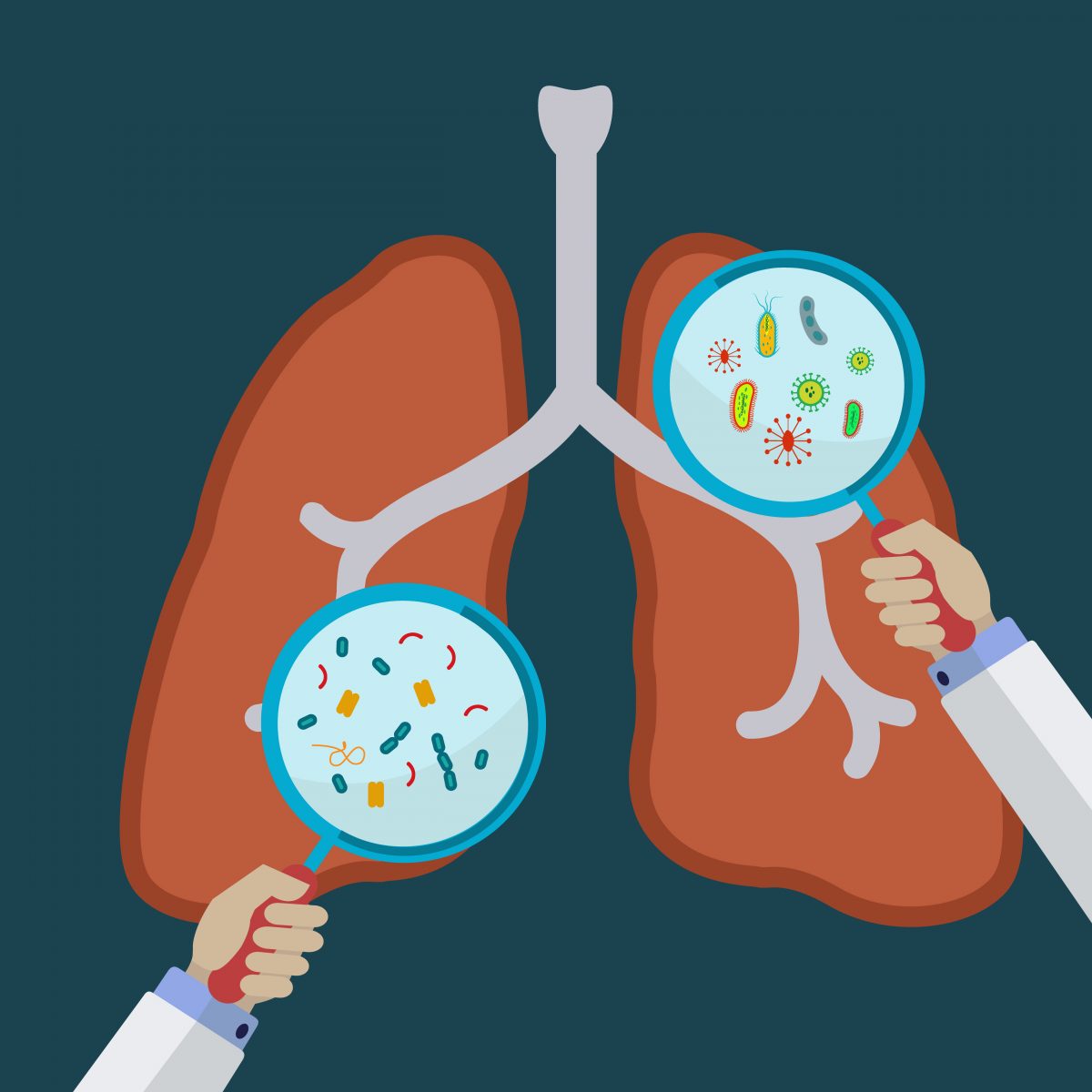Study Links Bacteria-derived Protein Fragment with Acute Exacerbations in IPF

A protein fragment produced by bacteria commonly found in the lungs of people with idiopathic pulmonary fibrosis (IPF) promotes lung cell death and acute exacerbations, a study shows.
“We discovered salt-loving bacteria in the lungs of patients with pulmonary fibrosis, and these bacteria secrete a peptide [a protein fragment] that marks the lung cells it touches for death,” Isaac Cann, PhD, the study’s co-senior author, a microbiology and animal sciences professor at Carl R. Woese Institute for Genomic Biology of the University of Illinois at Urbana–Champaign, said in a press release.
The study, “A Staphylococcus pro-apoptotic peptide induces acute exacerbation of pulmonary fibrosis,” was published in the journal Nature Communications.
IPF is a chronic lung disease of unknown origin that results in thickening, stiffening, and scarring (fibrosis) of lung tissue, making it hard for patients to breathe. During the course of the disease, many patients experience acute exacerbations — sudden aggravation of disease symptoms — that may lead to severe respiratory failure and death.
While the exact mechanisms underlying these episodes of disease worsening are still unknown, recent evidence suggests that bacteria living in the lungs of IPF patients contribute to disease progression, and to increased mortality risk.
Particularly, “salt-loving” bacteria have been found to thrive in the lungs of IPF patients, likely due to high amounts of salt in the lining of patients’ lungs.
These findings prompted researchers to evaluate whether such salt-loving bacteria, such as Staphylococcus strains, played a role in IPF acute exacerbations.
The team first compared the lungs of healthy mice with those of a mouse model of IPF, and confirmed that the fibrotic lung tissue is a salty microenvironment.
Also, this microenvironment was favorable not only to the growth of salt-loving bacteria, but also associated with an impaired immune response — having lower levels of B-cells, a specific type of immune cell.
The team then grew salt-loving bacteria associated with IPF in a salty environment, and analyzed the molecules they produced, as well as their effects in human lung cells grown in the lab.
Researchers found that a particular molecule, which they called corisin, produced and released by Staphylococcus nepalensis bacteria promoted the death of lung cells.
To confirm the role of corisin in IPF’s acute exacerbations, the team assessed the effects of giving mice with IPF either corisin, a saline solution, corisin-producing bacteria (Staphylococcus nepalensis), or Staphylococcus bacteria that did not produce corisin.
Results showed that mice given corisin or corisin-producing bacteria had the greatest signs of acute exacerbations, and significantly higher levels of lung cell death.
In addition, when looking at lung tissue from IPF patients with acute exacerbations, researchers found they had significantly higher levels of corisin in their lungs than IPF patients with stable disease.
These findings suggest that “this soluble factor [corisin] released by the bacteria enriched from the fibrotic tissue contributes to the mechanism of lung fibrosis by sealing the fate of lung epithelial cells,” the researchers wrote.
Notably, additional analyses revealed that corisin was a fragment of a larger, unharmful protein.
“It’s like a Trojan horse,” said Cann. “Anybody trying to characterize the large protein to find what it does would never know it has this destructive element hidden inside it. The microbe makes the [large protein] and then it cuts out that small piece of it, the corisin, and that is very deadly.”
“Knowing that a cause of the acute exacerbation is a bacteria-derived factor gives us a fightable enemy,” said Esteban Gabazza, MD, PhD, the study’s co-senior author and an immunology professor at Mie University Faculty and Graduate School of Medicine in Japan.
“On the patient side, this new discovery could mitigate the psychological stress of fighting against an ‘unknown intruder,’ while on the physician side, this can stimulate the development of strategies for treatment and [therapy] discovery,” Gabazza said.
Overall, based on the results, the team concluded that “bacteria shedding corisin are involved in acute exacerbation of IPF, yielding insights to the molecular basis for the elevation of staphylococci in pulmonary fibrosis.”
The team now plans to identify the bacterial enzyme responsible for cutting the original protein into the toxic fragment, as it could be used as a potential therapeutic target. They also will work on the identification of other strains of bacteria that produce corisin, or similar molecules, and on their potential effects in other fibrotic diseases.
Cann and Gabazza also noted that these findings may have implications for the current COVID-19 outbreak, as some patients may develop pulmonary fibrosis after recovering from the viral infection, which is similar to what was seen in some patients after the outbreak of the SARS coronavirus in 2002.







